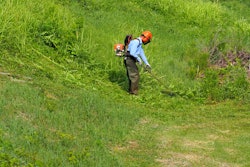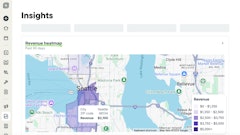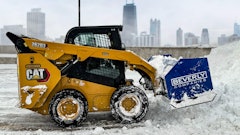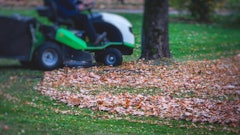
In the landscaping world, there’s a common trap many businesses fall into: thinking that being busy means being successful. You’ve got crews in the field, trucks on the road, and a full calendar — so you must be making money, right? Not necessarily.
If you’re not job costing consistently, accurately, and in real time, you could be losing money on jobs and not even know it.
At The Green Executive, we’ve worked with landscape companies of all sizes — from solo operators to million-dollar firms — and the most profitable businesses all have one thing in common: they understand their numbers. Job costing isn’t just a financial task. It’s a decision-making tool that directly impacts your pricing, your team performance, and your ability to grow.
If you’re ready to take control of your margins, here are our top tips for job costing in a landscaping business.
Track Labor in Real Time
Labor is the largest expense for most landscape companies, yet it’s often the least controlled. When time is tracked loosely or written down at the end of the week from memory, you lose accuracy and profitability.
Start by using a digital time tracking tool that’s synced to each job. LMN’s time app, for example, allows crews to clock in and out on specific tasks and job sites, giving you a clear breakdown of how much time is being spent and where. This is crucial for evaluating crew efficiency and keeping labor costs aligned with your estimates.
Pro Tip: Break labor down by activity, like mowing, edging, planting, or hardscape installation. This lets you see which services are consistently underperforming — and why.
 @Dmytro - stock.adobe.com
@Dmytro - stock.adobe.com
Account for Equipment Usage
Your equipment doesn’t just cost money when you buy it. There are ongoing expenses for fuel, maintenance, insurance, and wear-and-tear. If you’re not allocating equipment costs to each job, you may be undercharging without realizing it.
Try assigning an hourly usage rate to each piece of equipment. For example, if your skid steer costs you $15/hour to own and operate, that amount should be built into your job costing for every hour it’s in use. LMN’s budget tool can help you set these rates and bake them into your estimating process.
Track Materials As They’re Used, Not Just When They’re Ordered
Let’s say you estimate a job will use 10 yards of mulch, but the crew ends up using 13. That extra three yards might not sound like much — until it happens on 30 jobs in a season.
Use purchase orders or material tracking sheets to keep a running log of what’s actually delivered and used on site. Better yet, integrate this process with your field software so discrepancies between estimated and actual usage are visible in real time. This not only tightens your job costing but helps improve your estimating accuracy over time.
Review Every Job — Not Just Big Ones
One of the biggest job costing mistakes we see is only reviewing the “problem jobs” or the largest installs. Every job matters. Small maintenance contracts might carry tight margins, so even minor overruns can have a significant impact.
Make it part of your weekly routine to review completed jobs. Look at actual vs. estimated costs for labor, materials, and equipment. This habit gives you early warning signs when something’s off—before it snowballs into a season-long profitability issue.
Use Software Built for Landscapers
If you’re still relying on spreadsheets, sticky notes, or generic accounting software, it’s time to level up. Tools like LMN are specifically built for the green industry, making job costing and estimating more accurate, more consistent, and easier to use across your whole team.
Pairing LMN with professional bookkeeping support ensures that what’s happening in the field is being reflected in your financial reports. That means no more surprises at tax time, and no more wondering where the cash went.



![Gravely Pro Turn Mach One My23 Dsc03139 Edit 1200x800 5b2df79[1]](https://img.greenindustrypros.com/mindful/acbm/workspaces/default/uploads/2025/10/gravely-pro-turn-mach-one-my23-dsc03139-edit-1200x800-5b2df791.BucBnDoN22.jpg?auto=format%2Ccompress&fit=crop&h=100&q=70&w=100)







![Gravely Pro Turn Mach One My23 Dsc03139 Edit 1200x800 5b2df79[1]](https://img.greenindustrypros.com/mindful/acbm/workspaces/default/uploads/2025/10/gravely-pro-turn-mach-one-my23-dsc03139-edit-1200x800-5b2df791.BucBnDoN22.jpg?ar=16%3A9&auto=format%2Ccompress&fit=crop&h=135&q=70&w=240)








